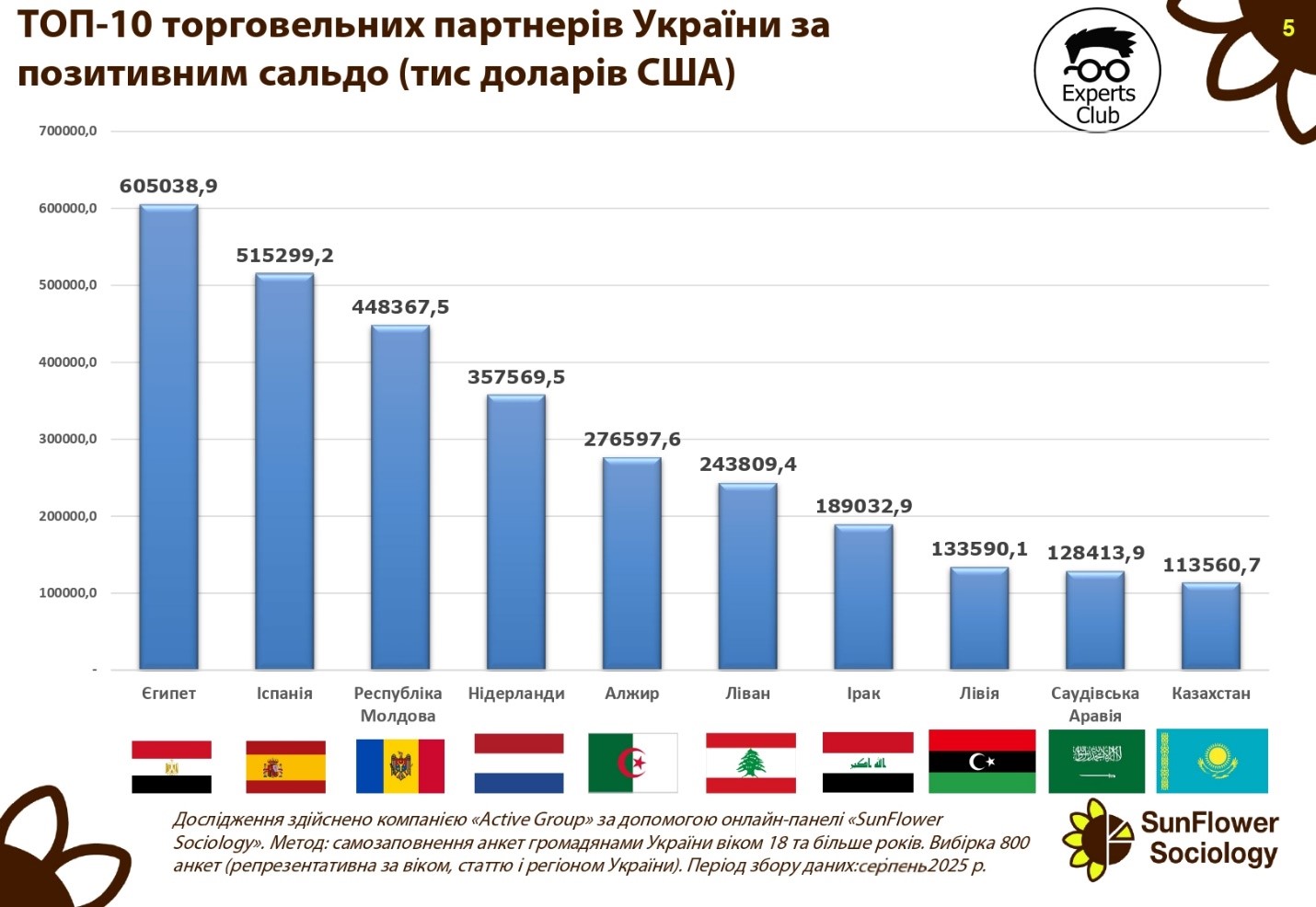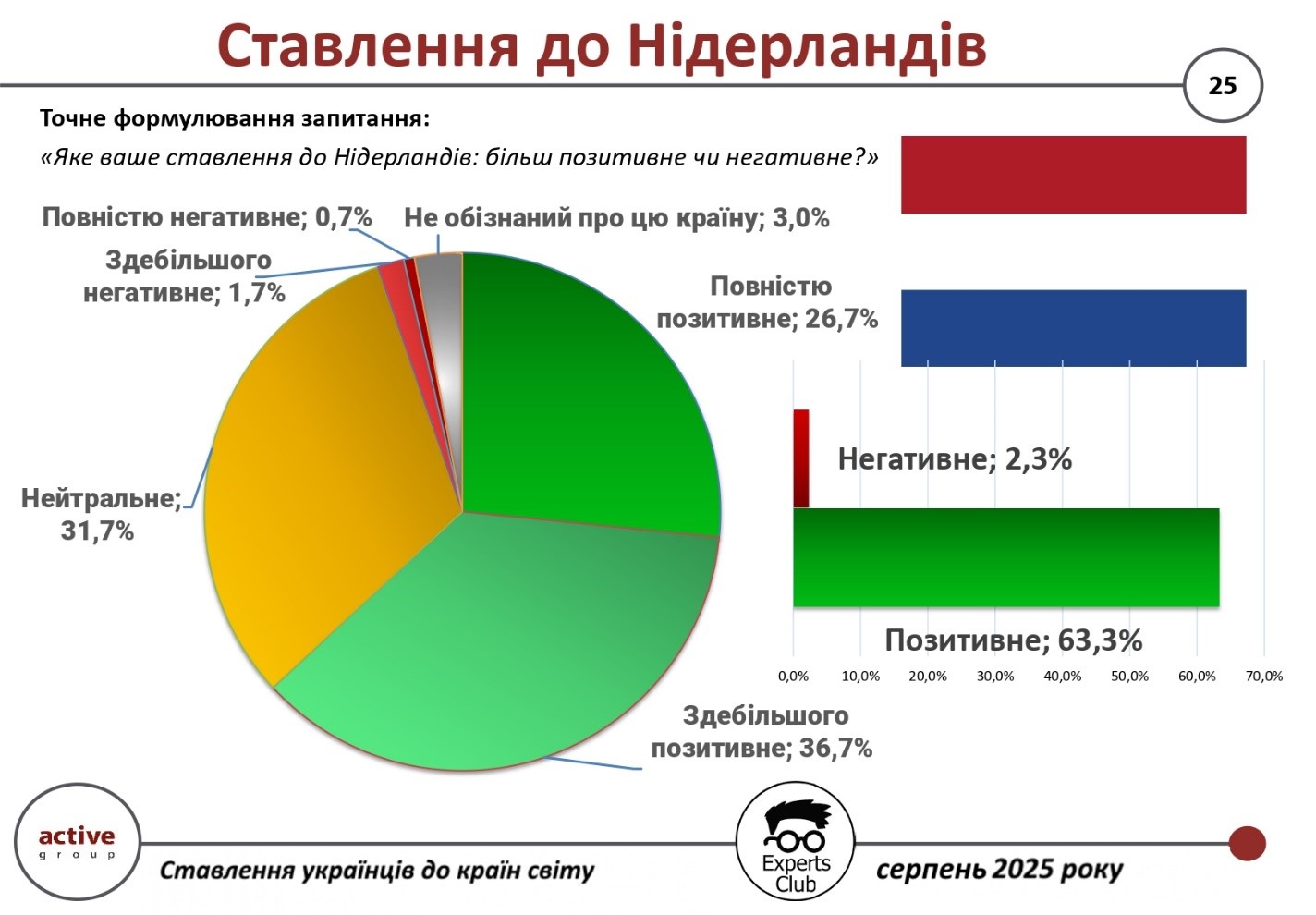
The Romanian Ministry of Defense signed a contract with the Dutch government to purchase 18 F-16 Fighting Falcon multi-role fighter jets and related equipment.
According to the ministry, the agreement was signed on Monday, November 3. The purchased aircraft will be used exclusively for training at the European F-16 Training Center in Fetești, which has become a regional training center for pilots from NATO member countries and Alliance partners.
“The purchase is being made for a symbolic price of one euro. This is a smart investment in training, cooperation, and the future,” the Romanian Ministry of Defense said.
According to the Romanian side, the transfer of the aircraft is intended to strengthen the training capabilities of allied countries’ pilots and develop defense cooperation in the region.

The DTEK energy holding company in the Netherlands has secured the seizure of assets belonging to Gazprom International Limited, a company controlled by the Russian Federation, in the form of a 50% stake in the Dutch company Wintershall Noordzee B.V., as part of the enforcement of an arbitration award.
“Gazprom International Limited appealed the seizure, but the District Court of The Hague rejected Gazprom International Limited’s appeal and upheld the seizure,” DTEK told Interfax-Ukraine news agency.
The company recalled that after the illegal occupation of Crimea in 2014, Russia also illegally seized and expropriated all assets of the energy distribution company DTEK Krymenergo, which distributed and supplied electricity in Crimea.
In 2017, DTEK Krymenergo filed a lawsuit with the International Court of Arbitration in The Hague, demanding that Russia pay damages caused by the illegal expropriation. In 2023, the international arbitration court in The Hague upheld DTEK’s claim and awarded damages of approximately $267 million from the Russian Federation, including interest, which will accrue until full payment is received.
“Since Russia did not comply with the international court’s decision and did not pay the damages awarded, DTEK initiated enforcement proceedings to recover damages from Russia in countries where Russian assets are located,” the energy holding company said.
Currently, active enforcement procedures and measures against Russia are being carried out in the United States, the United Kingdom, the Netherlands, the Czech Republic, and Israel. In addition, measures are being developed for enforcement in other jurisdictions.
As reported, in the fall of 2023, the International Court of Justice in The Hague fully upheld DTEK’s claim against Russia regarding seized assets in the illegally annexed Crimea and ordered Russia to pay the Ukrainian company compensation in the amount of $267 million. The arbitration award is enforceable under the 1958 New York Convention.
At the same time, the energy holding company noted that it plans to immediately initiate the process of recognition and enforcement of the award in the territories of those states where Russia has assets.
DTEK Krymenergo was the largest electricity supplier on the Crimean peninsula, providing more than 80% of its supply.
Wintershall Noordzee B.V. is engaged in the exploration and production of natural gas in the North Sea on the continental shelf of the Netherlands and the United Kingdom. Wintershall Noordzee B.V. is a subsidiary of the German company Wintershall Dea.

Ukraine maintains a significant positive trade balance with a number of key partners, which partially offsets the deficit in relations with China and EU countries.
The largest surplus in the first half of 2025 was recorded in trade with Egypt — $605.0 million. Spain ranks second with a balance of $515.3 million, followed by the Republic of Moldova — $448.4 million. Positive dynamics are also observed in relations with the Netherlands ($357.6 million), Algeria ($276.6 million), and Lebanon ($243.8 million).
Ukraine also has a high trade surplus with Iraq ($189.0 million), Libya ($133.6 million), Saudi Arabia ($128.4 million), and Kazakhstan ($113.6 million).

“The positive trade balance indicates that Ukraine is capable of competing effectively in international markets, especially in the agricultural sector and metallurgy. At the same time, it should be borne in mind that these markets are vulnerable to changes in the global economic situation, price fluctuations, and political factors,” emphasized Maksim Urakin, founder of Experts Club and economist.
According to him, maintaining a positive balance in relations with the countries of the Middle East and North Africa is a key element of Ukraine’s foreign trade strategy.
“Egypt, Spain, and the countries of the Arab world are stable importers of Ukrainian agricultural products. This is a strategic direction that needs to be developed further, as it creates a safety cushion for the economy against the backdrop of significant import costs,” Urakyn emphasized.
Analysts note that consolidating positions in the African and Middle Eastern markets could become a long-term factor in strengthening Ukraine’s foreign economic balance.
Agricultural exports, ALGERIA, ECONOMY, EGYPT, EXPERTS CLUB, FOREIGN TRADE, IRAQ, KAZAKHSTAN, LEBANON, LIBYA, MOLDOVA, NETHERLANDS, positive balance, SAUDI ARABIA, SPAIN, UKRAINE, МАКСИМ УРАКИН


The Netherlands ranks high in the rating of Ukrainians’ sympathies, demonstrating a consistently positive image among citizens. This is evidenced by the results of an all-Ukrainian survey conducted by Active Group in cooperation with the Experts Club information and analytical center in August 2025.
According to the study, 63.3% of Ukrainians have a positive attitude towards the Netherlands (36.7% – mostly positive, 26.7% – completely positive). Only 2.3% of respondents expressed a negative attitude (1.7% – mostly negative, 0.7% – completely negative). Another 31.7% of citizens are neutral, and 3.0% said they are not sufficiently aware of this country.
“The Netherlands is one of Ukraine’s most important trading partners in the European Union. In the first half of 2025, the volume of bilateral trade amounted to almost $ 1.48 billion, of which exports from Ukraine amounted to more than $ 918 million and imports from the Netherlands – $ 561 million. The positive balance of $357 million is evidence that Ukraine has favorable positions in cooperation with this country,” said Maksym Urakin, founder of Experts Club.
In his turn, Alexander Poznyi, co-founder of Active Group, emphasized that the positive attitude of Ukrainians is complex.
“The Netherlands is known as a country that supports Ukraine in the international arena and participates in humanitarian and financial assistance programs. At the same time, long-term cultural and educational contacts strengthen the positive image of this country in Ukrainian society. That is why almost two-thirds of citizens show favorable attitudes, and the negative segment remains minimal,” he added.
The survey was part of a broader study of international sympathies and antipathies of Ukrainians in the current geopolitical environment.
The full video can be viewed here:
https://www.youtube.com/watch?v=YgC9TPnMoMI&t
You can subscribe to the Experts Club YouTube channel here:
https://www.youtube.com/@ExpertsClub
ACTIVE GROUP, DIPLOMACY, EXPERTS CLUB, NETHERLANDS, Poznyi, SOCIOLOGY, TRADE, URAKIN

In the Netherlands, the cost of shelter for Ukrainian refugees will increase from October, from the current €105 per month to €244, according to Minister for Asylum and Migration Mona Keizer.
“The increase in personal contributions will be used to cover the shelter’s operating costs, such as gas, water, and electricity,” Keizer explained. With this measure, she hopes to reduce the difference between asylum seekers and Ukrainian refugees.
According to RTL, a single Ukrainian currently pays €105 per month, but this amount will increase to €244 in October. Families with two minor children must pay a maximum of €488, depending on their situation.

Dutch Defense Minister Ruben Brekelmans has announced that the country will provide Ukraine with another €175 million military aid package, including radar systems, self-driving cars and drones, as well as contracts with Ukrainian companies to produce 600,000 drones.
“Russia’s brutal air strikes underscore the importance of our support for Ukraine. We have signed contracts with Ukrainian companies to produce 600,000 drones. I am also announcing a new aid package worth 175 million euros, which includes radar systems, self-driving cars and drones,” he wrote on social media site X on Tuesday.
Later, the Ministry of Defense’s website provided detailed information on the contents of the aid package.
“The Netherlands is giving Ukraine 100 additional radars to detect drones. Also, vehicles will be delivered to the country to transport the wounded. In addition, the Netherlands is allocating additional funds to support drones. The total amount of the aid package is approximately 175 million euros,” the statement said.
According to the ministry, this is in addition to the contracts recently signed with the “Ukrainian industry” for the production of drones worth EUR 500 million.
In early June, it was reported that Brekelmans announced a new support package worth EUR400 million at a meeting of the Contact Group on Ukraine’s defense. According to the minister, the package includes more than 50 maritime drones and will include weapons systems, sensors, spare parts, and training.